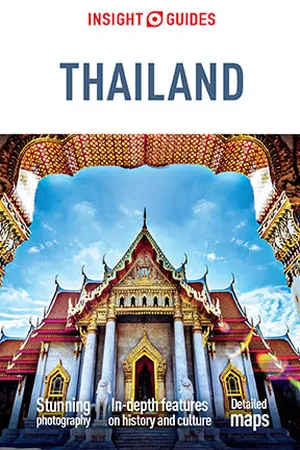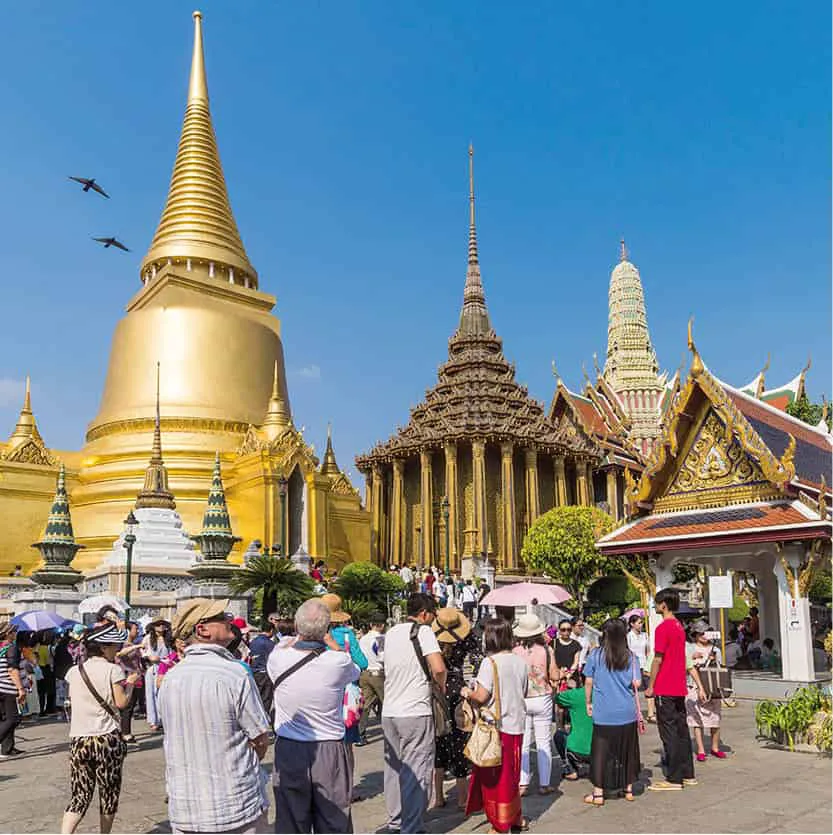
- English
- ePUB (mobile friendly)
- Available on iOS & Android
Insight Guides Thailand
About this book
For many, Thailand remains the quintessential Southeast Asian destination - exotic and exciting but accessible, whether you want to soak up Bangkok's bright lights or the sun on a tropical island. Be inspired by the new edition of Insight Guide Thailand, a comprehensive full-colour guide to the 'land of smiles'.
Inside Insight Guide Thailand:
A thoroughly updated new edition by our expert Thailand author.
Stunning, specially-commissioned photography brings this beautiful country and its people to life.
Highlights of the country's top attractions, including diving off Krabi and the Unesco World Heritage site at Ayutthaya.
Descriptive region-by-region accounts cover the whole country from frenetic Bangkok and laid-back Chiang Mai to the country's stunning beaches and islands, including Phuket and Ko Phangan.
Detailed, high-quality maps throughout will help you get around and travel tips give you all the essential information for planning a memorable trip.
About Insight Guides: Insight Guides has over 40 years' experience of publishing high-quality, visual travel guides. We produce around 400 full-colour print guide books and maps as well as picture-packed eBooks to meet different travellers' needs. Insight Guides' unique combination of beautiful travel photography and focus on history and culture together create a unique visual reference and planning tool to inspire your next adventure.
'Insight Guides has spawned many imitators but is still the best of its type.' - Wanderlust Magazine
Frequently asked questions
- Essential is ideal for learners and professionals who enjoy exploring a wide range of subjects. Access the Essential Library with 800,000+ trusted titles and best-sellers across business, personal growth, and the humanities. Includes unlimited reading time and Standard Read Aloud voice.
- Complete: Perfect for advanced learners and researchers needing full, unrestricted access. Unlock 1.4M+ books across hundreds of subjects, including academic and specialized titles. The Complete Plan also includes advanced features like Premium Read Aloud and Research Assistant.
Please note we cannot support devices running on iOS 13 and Android 7 or earlier. Learn more about using the app.
Information





Table of contents
- How To Use This E-Book
- Thailand’s Top 10 Attractions
- Editor’s Choice
- Introduction: The Kingdom of Thailand
- Geography and Landscape
- Decisive Dates
- Early History
- From Ayutthaya to the 1932 Coup
- Contemporary Thailand
- People and Culture
- Insight: A Calendar of Celebrations
- Religion
- Insight: Images of the Buddha
- The Performing Arts
- Arts and Crafts
- Cuisine
- Architecture
- Insight: Temple Art and Architecture
- Introduction: Places
- Introduction: Bangkok and Suburbs
- Bangkok
- Bangkok’s Suburbs
- Introduction: Central Thailand
- West of Bangkok
- Insight: A Feast of Fruits
- North of Bangkok
- South of Bangkok
- Introduction: Southeast and South Thailand
- Eastern Seaboard
- Northern Gulf Coast
- Ko Samui, Ko Phangan and Ko Tao
- Northern Andaman Coast
- Insight: Thailand’s Marine Life
- Phuket
- Krabi, Ko Phi Phi and Ko Lanta
- The Deep South
- Introduction: North Thailand
- Chiang Mai
- Around Chiang Mai
- Chiang Rai and East
- Sukhothai and Surroundings
- Tak and Mae Hong Son
- Insight: Hill-Tribe Crafts and Clothing
- Introduction: Northeast Thailand
- Nakhon Ratchasima to Ubon Ratchathani
- North to Loei
- Along the Mekong River
- Transport
- A-Z: A Handy Summary of Practical Information
- Understanding the Language
- Further Reading